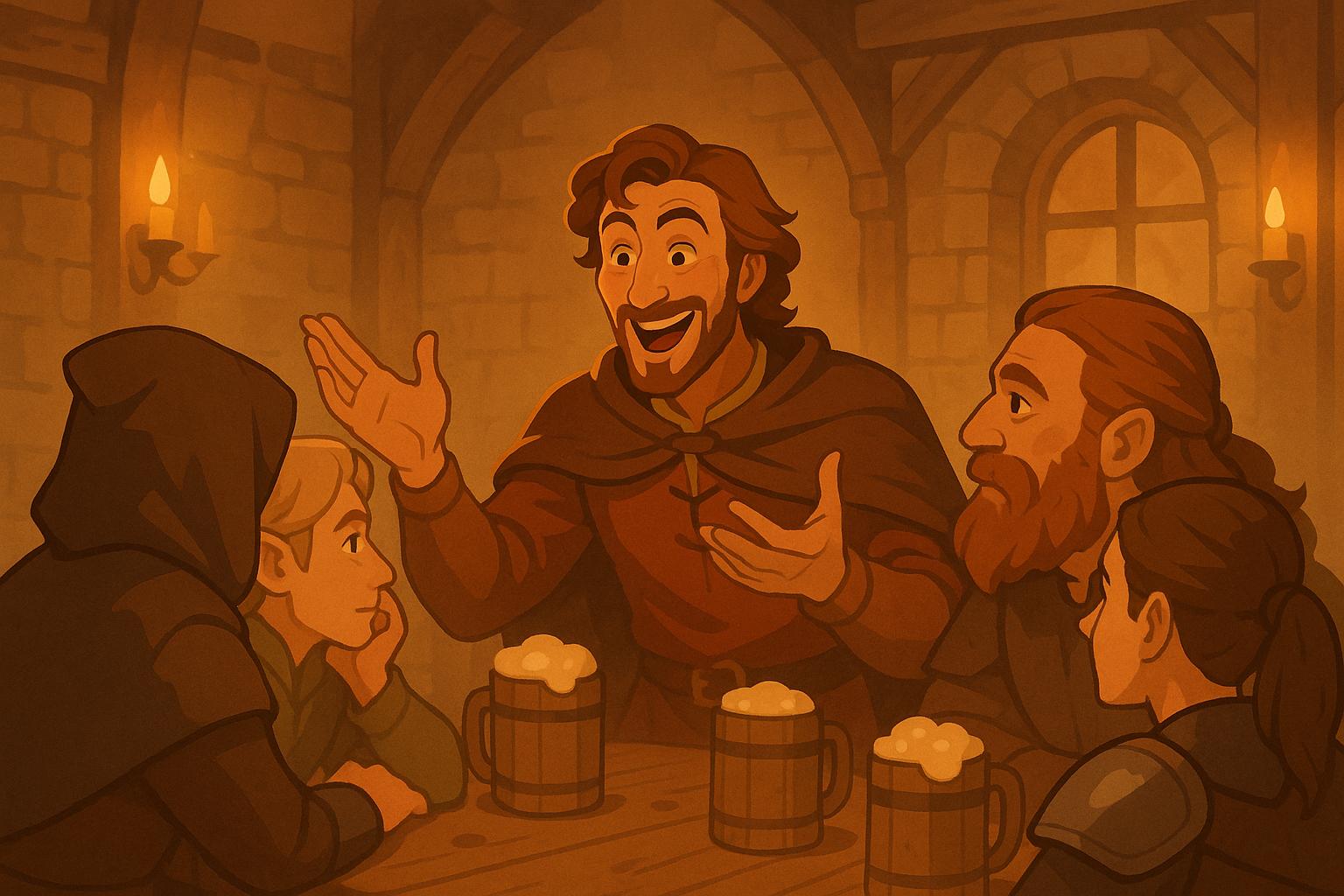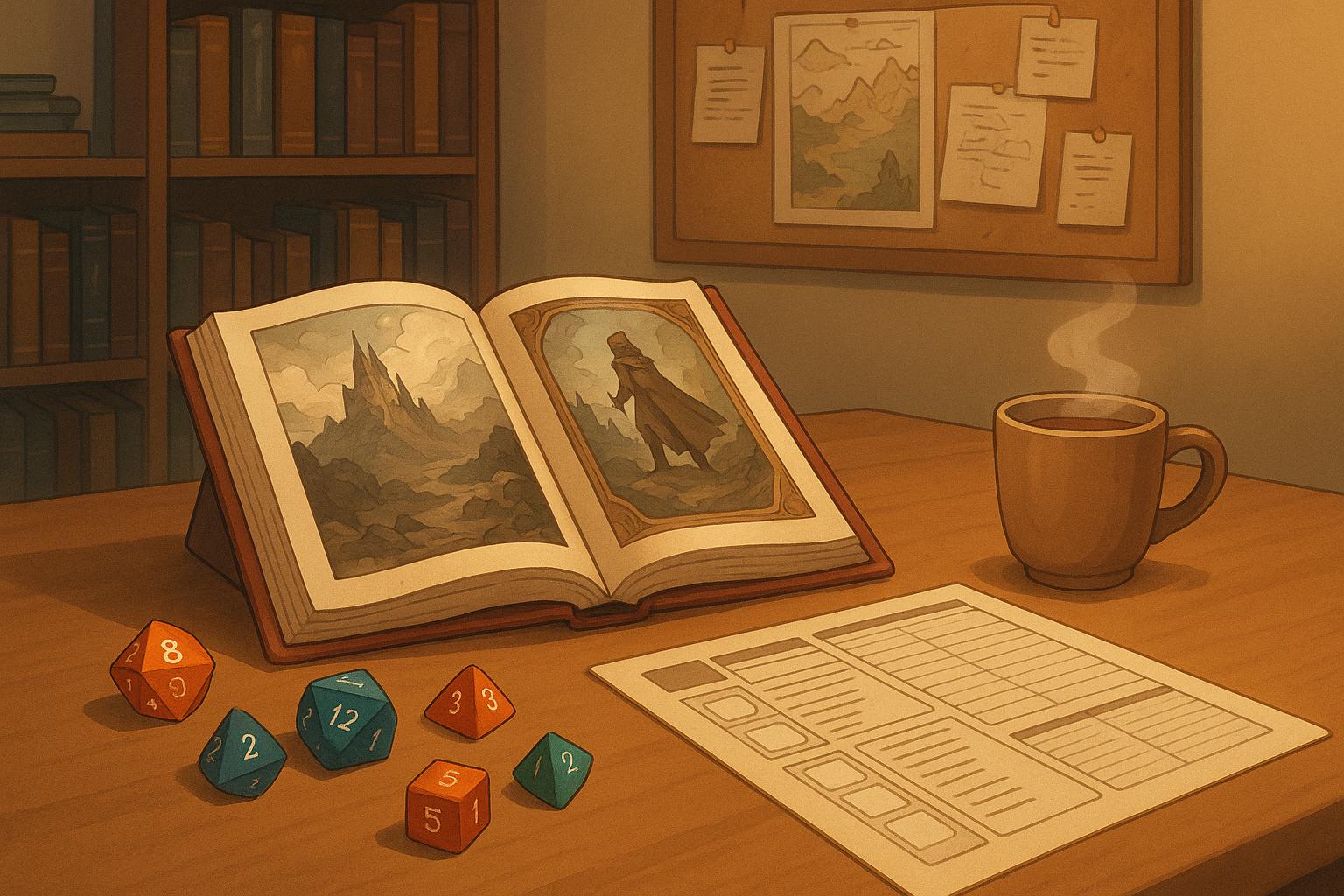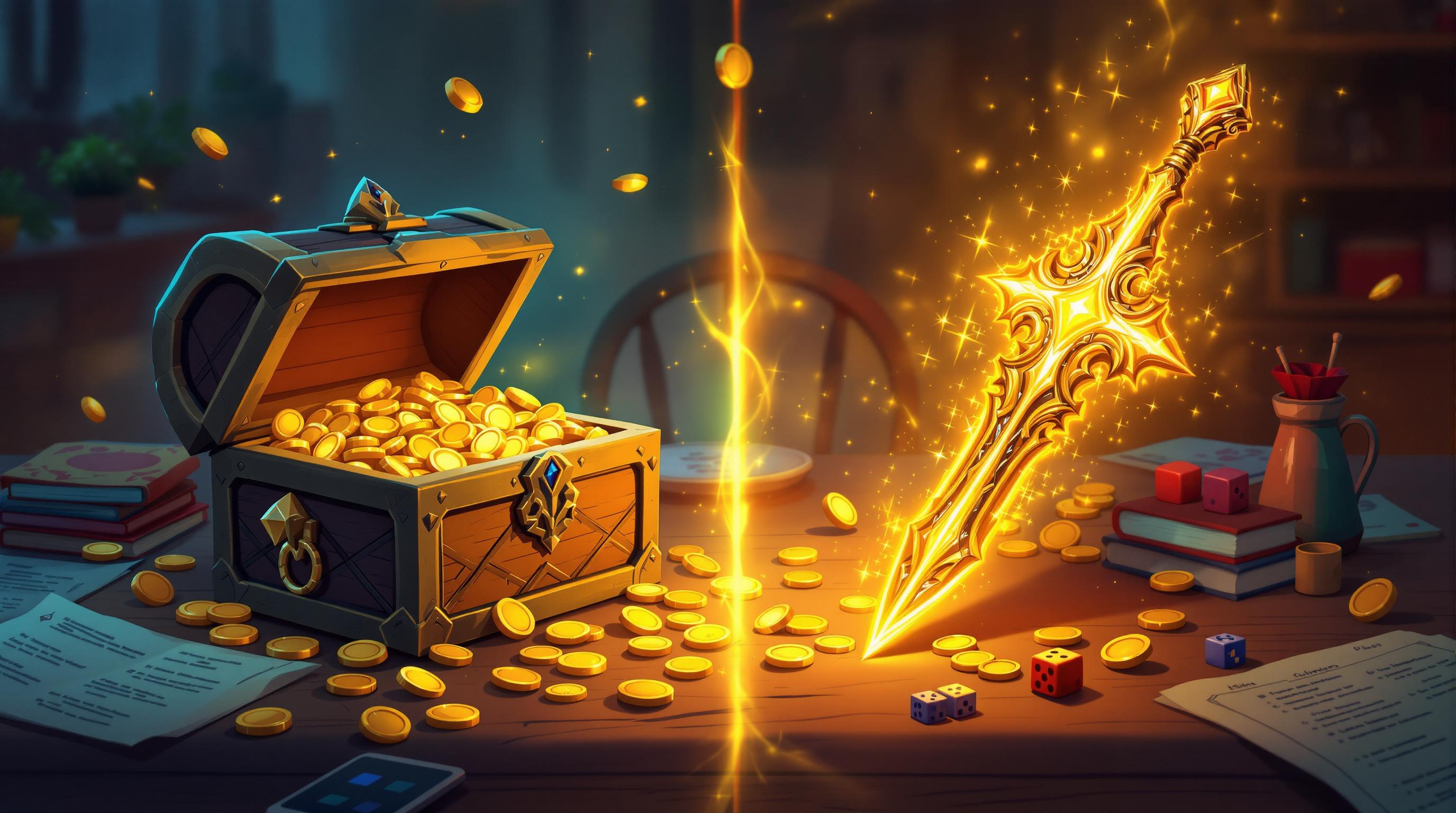NPC growth is the key to making your tabletop RPG campaigns unforgettable. By creating dynamic characters who evolve through actions, relationships, and player decisions, you can make your game world feel alive and engaging. Here's what you'll learn in this guide:
- How to create memorable NPCs with distinct personalities, backstories, and quirks.
- Ways to track and develop NPCs as your campaign progresses.
- Building meaningful relationships between players and NPCs.
- Tools and methods to organize and manage NPC details effectively.
Whether you're a beginner or experienced game master, this guide will help you transform static NPCs into dynamic characters who grow alongside your players.
How To Create Non-Player Characters for RPGs
Creating NPCs Players Will Remember
Making NPCs (non-player characters) stand out involves thoughtful design and attention to detail. While not every NPC needs a deep backstory, the ones central to your campaign should feel distinct and engaging to leave a lasting impression on players.
Building Personality and Backstory
Great NPCs often have conflicting motivations, adding depth and complexity. For instance, a merchant might wrestle between chasing profits and staying loyal to their community. These inner struggles make characters feel more real and open up avenues for development.
When crafting backstories, focus on details that tie directly into your campaign's story:
- Relationships and alliances: Who are they connected to, and how does it affect their role?
- Shaping past events: What moments in their history influence the current narrative?
- Current goals: What are they striving for right now?
- Personal values and beliefs: What drives their decisions?
"An NPC's arc works mostly the same as a (regular, non-static) movie or book character arc." [3]
Adding Descriptive Details
Unique traits and quirks make NPCs easier to remember. Instead of overwhelming players with too many details, pick 2-3 standout features. Use this simple framework to organize traits effectively:
| Element | Purpose | Example |
|---|---|---|
| Physical Trait | Visual anchor | A prominent scar or striking eye color |
| Mannerism | Behavioral quirk | Fidgeting with their sleeves nervously |
| Speech Pattern | Verbal identifier | Speaking in overly formal language |
These small but vivid details help players create a mental image of the character.
Designing NPCs Who Take Action
NPCs that actively shape the story feel more dynamic and alive. They should react to player actions, pursue their own goals, and interact with the world around them. This makes them more than just quest dispensers.
Think about how your NPCs might:
- Adjust to changes in the world or events.
- Chase their own objectives, whether personal or political.
- Forge alliances or spark rivalries.
- Influence the campaign’s direction through their decisions.
The trick is to ensure NPCs are active participants without overshadowing the players. Even NPCs with simple arcs can leave a strong impression if they show growth and agency through their actions [2][3].
NPCs can also evolve through player interactions. For example, a humble shopkeeper might grow into a key ally depending on how players treat them. These organic developments often lead to the most memorable moments in a campaign.
How to Develop NPCs Over Time
After crafting memorable NPCs, the next challenge is ensuring they grow and change as your campaign progresses.
Tracking NPC Changes
To manage NPC development, it's important to have a system in place. Tools like World Anvil or Campaign Logger can help you stay organized. Keep detailed profiles for each NPC, including core stats, relationship updates, key events, and potential story hooks. This makes it easier to document their journey and plan their role in future events [4].
Building NPC Relationships and Character Arcs
NPC relationships evolve over time, and tracking them adds depth to your campaign. Systems like favor or reputation scores can help you measure loyalty, trust, or rivalry. Here are some ideas to bring these dynamics to life:
- Use favor scores to reflect how NPCs feel about player actions.
- Let NPCs build alliances or develop rivalries with each other.
- Create moments where NPCs request help or offer aid, adding layers to their relationships.
For character arcs, tie their development to the campaign's themes while ensuring player actions influence the outcome. Here's a quick breakdown of key arc components:
| Arc Component | Description |
|---|---|
| Motivation | What drives the NPC, tied to the campaign. |
| Conflict | Obstacles or challenges that test their beliefs. |
| Growth Points | Key moments where the character changes. |
| Resolution | A payoff that affects the story meaningfully. |
When introducing NPC arcs, make sure they support the main narrative rather than overshadow it. Let players' decisions shape these arcs, creating a world where their choices matter [2][4].
Focus on a few key NPCs whose development will have a real impact on the story and players' experiences. Using tools and templates can help you maintain consistency while leaving room for natural growth [1][4].
Next, we’ll dive into methods and tools to make managing NPC growth even more seamless.
sbb-itb-b8b00a5
Tools and Methods for Managing NPC Growth
Using NPC Profiles and Templates
Detailed NPC profiles help keep characters consistent and engaging throughout your campaign. A solid profile should include key traits and development points:
| Profile Element | Description | Example Usage |
|---|---|---|
| Core Traits | Personality, quirks, appearance | A blacksmith who hums while working but snaps at critics |
| Relationships | Connections to players and other NPCs | Current favor scores, alliances, rivalries |
| Story Hooks | Potential plot points and character arcs | Personal goals, unresolved conflicts |
| Development Notes | Changes in behavior or motivation | How recent events affected their outlook |
Using Resources to Support NPC Growth
Digital tools can make managing NPCs a lot easier. Campaign management software and resources, like the TTRPG Games Directory, can help you:
- Keep character portrayals consistent
- Track evolving relationships
- Plan out character development arcs
- Log important interactions and events
Adjusting NPCs Based on Player Input
Player actions often influence how NPCs behave or evolve. Document these interactions to reflect changes in attitudes, relationships, or storylines. For example, an informant may turn hostile after a betrayal, drastically changing their role in the campaign [1][2].
These methods give you a solid foundation for creating dynamic NPCs. Next, you can dive into advanced techniques to make them even more immersive and interactive.
Advanced Tips for Engaging NPCs
Designing Moral Challenges for NPCs
Tie moral challenges to an NPC's history and beliefs to create ethical dilemmas that resonate with players. These scenarios can deepen emotional involvement and make the story feel more personal.
| Challenge Type | Description |
|---|---|
| Personal Values | Tests core beliefs: A healer confronted with violence |
| Loyalty Conflicts | Examines relationships: A guard torn between duty and family |
| Resource Dilemmas | Forces tough decisions: A merchant rationing limited supplies |
These dilemmas not only add depth to your NPCs but can also influence their development for future campaigns.
Reusing NPCs in New Ways
Revamp NPCs by giving them new roles while keeping their core characteristics intact. This saves time and highlights character growth across different stories or settings. Focus on their primary motivations, tweaking their roles to fit the new narrative.
Making NPC Interactions More Immersive
Details make all the difference when it comes to creating memorable NPCs. Use sensory descriptions and unique traits to make them stand out. Here are a few ways to enhance interactions:
- Physical Presence: Add specific details that make NPCs feel real. For example, a blacksmith’s callused hands might move with unexpected grace, or a merchant’s eyes could constantly dart between customers and wares.
- Environmental Integration: Tie NPCs to their surroundings. An herbalist’s shop might carry the scent of dried flowers and bitter roots, while a harbor master could exude the smell of sea salt and tarred rope.
- Dynamic Responses: NPC reactions should align with their personality and the situation at hand. This ensures interactions feel natural and believable.
"Don't let your character be static. Encourage other players' stories as much as your own." [5]
Wrapping Up and Final Thoughts
Key Takeaways
NPC growth plays a crucial role in making TTRPG storytelling engaging and memorable. To create characters that resonate, focus on consistent tracking, meaningful interactions, and arcs that evolve naturally within your campaign. This guide has covered practical strategies for building dynamic NPCs that grow alongside the story.
To craft memorable NPCs, preparation is key, but so is flexibility. Keep these essential elements in mind for fostering character development:
| Aspect of Development | How to Implement It | Effect on the Campaign |
|---|---|---|
| Character Growth | Monitor personality shifts and relationships | Increases player engagement |
| Dynamic Interactions | Adapt to player choices and events | Enhances immersion |
| Consistent Development | Keep track of milestones | Ensures cohesive character arcs |
Why You Should Try This Approach
Start small - pick a few NPCs and let their growth shine through their decisions and actions. If you’re seeking inspiration, the TTRPG Games Directory is a great resource for exploring systems that emphasize character-driven narratives.
"Strong characters evolve with the story, often surprising even their creators." [5]
When NPCs react and change in response to the campaign and player actions, they stop being just part of the scenery. Instead, they become essential contributors to the story you’re telling together.


